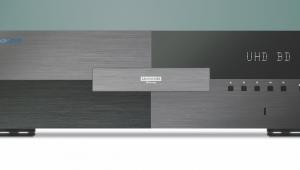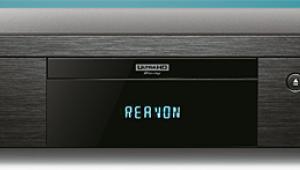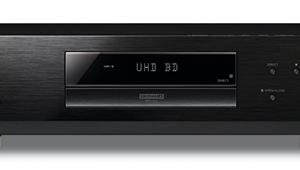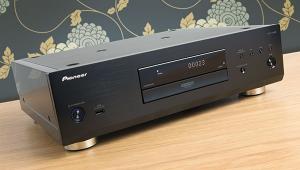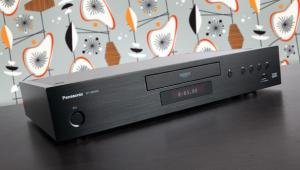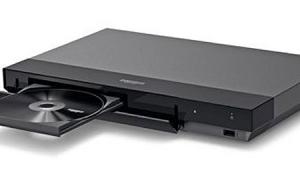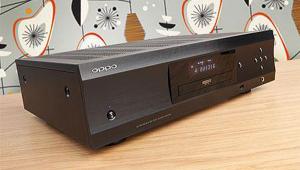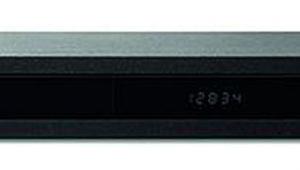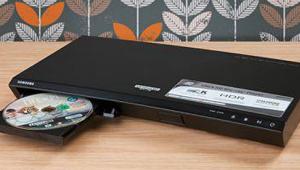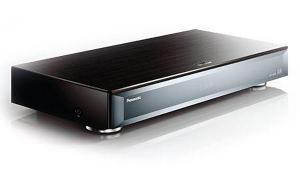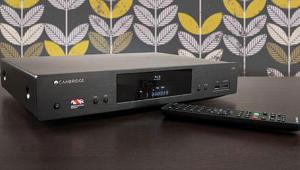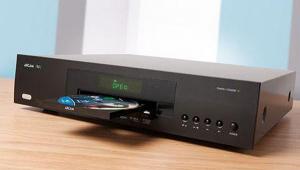Pioneer BDP-LX88 review
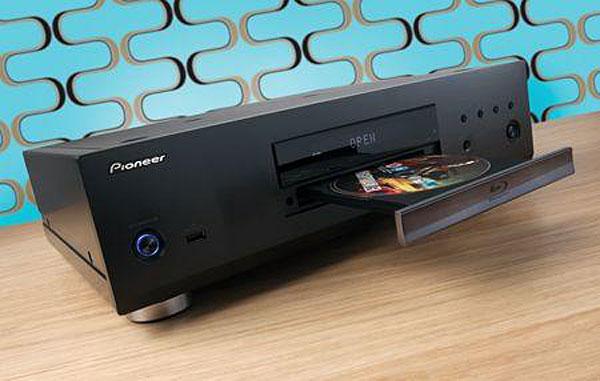
 Much like Thor's Uru hammer, only the home cinema worthy will be able to lift Pioneer's mighty BDP-LX88 Blu-ray player. Tipping the scales at an enormous 13.4kg, it boasts more armour than Brad Pitt’s tank, and is heavier than many AV receivers.
Much like Thor's Uru hammer, only the home cinema worthy will be able to lift Pioneer's mighty BDP-LX88 Blu-ray player. Tipping the scales at an enormous 13.4kg, it boasts more armour than Brad Pitt’s tank, and is heavier than many AV receivers.
This is, of course, a good thing. In a world of disc-spinning flotsam, the likes of the BDP-LX88 are rare and wonderful things. But there’s much more to Pioneer’s new flagship player than bulk. This deck delivers every possible playback refinement, cherishing legacy standards (yes, your DVD-Audio and SACD discs are welcome here) and welcoming new ones (4K upscaling to 2,160p is a given).
Indeed, everything about the BDP-LX88 is impressive. Insanely over-engineered and blessed with a veritable science lab of advanced image and audio processing, it’s capable of first-rate AV alchemy. Whatever goes in comes out a magnitude better.
As befits its upmarket profile, there’s an intriguing smorgasbord of connectivity, including dual HDMI outputs, coaxial and optical digital audio outputs, and both balanced and unbalanced analogue audio outputs. There’s no Wi-Fi, but you obviously get Ethernet plus front and rear USB ports.
The Main/Sub HDMI outs can be configured in several ways. Users can mimic the output from both, in order to drive both a panel and a PJ. Alternatively, you can separate sound from vision, one output feeding a display while the other delivers audio only to an AVR. There’s also a Pure Audio mode, where the only output is audio via the Sub HDMI.
One connection I’ve not encountered on a Blu-ray player before is a Zero Signal terminal. This phono doesn’t deliver any sound or vision, but connects to the Blu-ray player’s ground, or earth. The idea is to tether it to an unused phono input on your AV receiver (at last, something to do with those composite legacy inputs!) and thereby harmonise the GND reference level between the two devices. Apparently this is beneficial; while I couldn’t actually hear any difference, I took panacean pleasure from the process.
The chassis itself has black box-like integrity. A multi-layer design sees the 1.6mm base reinforced with a 3mm-thick plate to ensure absolute rigidity. The chances of any external vibration making it through would seem negligible. Steel frames shore up the innards and sides. Just for good measure, a 1mm-thick steel plate tops things off.
By default, the deck’s display is clear but overly bright. It can be dimmed or switched off entirely from the remote. The latter itself is an ugly button-fest, wilfully ignoring recent trends toward simplicity. You'll (eventually) know how to use it, but no one you hand it to will.
Disc loading times aren’t great either. A simple Java-lite concert disc takes a slow 40 seconds to get from open tray to onscreen menu. A more Java-heavy platter does the same in an agonisingly slow 62 seconds. Perhaps this is because the drive mechanism is overly cosseted? The acoustically dampened disc tray doesn't actually touch the chassis itself, beyond the damper springs.
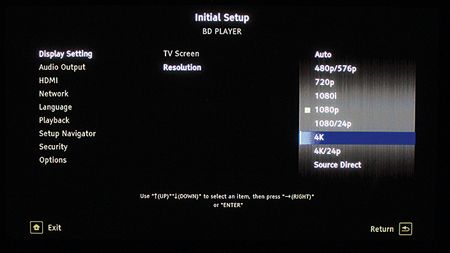
Picture processing tech is formidable. Pioneer’s Precise Pixel driver features HD detail enhancement and Triple HD Noise Reduction, which conspire to extract as much genuine detail from sources as possible. Image irritations such as Gaussian, block and mosquito noise are all subjected to clean-up. The result is evidenced with certain BDs – The Hunger Games: Mockingjay - Part 1 gains an almost futuristic sheen but never looks anything other than filmic – and really becomes noticeable on DVDs.
Well-encoded Blu-rays look superb. It’s enough to tempt me to watch Transformers: AoE again. Canny texture enhancement is used alongside edge processing to bring out subtle levels of depth. You can influence this using the Super Resolution tool in the deck’s Video Adjust menu.
This menu is exceedingly powerful, in fact. It allows 13 different items to be tuned, from brightness and chroma to resolution and assorted noise. There are also six presets, optimised for panel and projection display. Choose from Digital Cinema (for animation), Digital Film, Live (for concerts), or a Reference mode which allows all sources to play sans any additional processing.
Perhaps surprisingly, I often preferred the Live setting, which seems to improve contrast and reduce glare, even on the BD release of The Walking Dead, which is the epitome of stylised film grain. I suspect the effect these presets will have will vary depending whether you use a plasma or LCD display, but they are certainly worth experimenting with.
Where the player falls obviously short is in the non-provision of network streaming services. Even ubiquitous offerings such as BBC iPlayer and Netflix are absent – we’re grudgingly offered just YouTube and Picasa clients. At least you can stream video and audio content from networked storage.
The player is DLNA 1.5 compliant, and can act as a Digital Media Renderer. File support is extensive. MKV, AVI, WMV and MPEG video files all play, while audio support extends from APE to DSD. To maximise the performance of IP content, a Stream Smoother can be used to reduce block and mosquito noise on low-bitrate sources.
The player does exhibit foibles when networking, hanging when navigating connected sources. I have no qualms about its musical performance, though. Left and right channels are served by an ESS Sabre Reference DAC (ES9018), and spatial imaging is pronounced. Bowie’s Soul Love, from the SACD of Ziggy Stardust, proves a mesmerising listen, the kind that stays with you for days. It’s audiophile-grade stuff.
Normally on higher-spec players like this, an analogue audio feed is the best way to listen to music. But this Pioneer sounds gorgeous through HDMI as well.
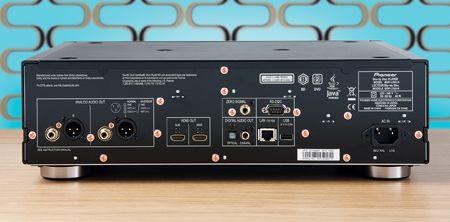
An onboard audio scaler comprises a trinity of processing tools, dubbed Hi-Bit 32, Up-Sampling and Digital Filter, either through manual tweaking or auto mode. Hi-Bit 32 increases the dynamic range of disc media, be it CD, DVD or Blu-ray, by requantizing 16-, 20- and 24-bit PCM to 32-bit, literally smoothing the audio signal; Up-Sampling reduces noise in the audible range, with variable Off, 2x or 4x sampling rates; Digital Filter allows for subtle shifts in the character of music – it eliminates pre-echo and can be set Sharp to emphasise transients or Slow for a warmer nuance.
For owners of compatible Pioneer AV receivers, the BDP-LX88 features PQLS (Precision Quartz Lock System) over HDMI to minimise timing errors.
Superlative swansong?In every sense, the BDP-LX88 is remarkable. It’s probably the best Blu-ray player Pioneer has ever made. Significantly, it offers better legacy disc support than the recent Arcam UDP411, and matches the Oppo BDP-105D in audio visual prowess, and outdoes it when it comes to musicality (although the Oppo offers better connectivity and control). There are feature shortcomings, but not enough to dampen my enthusiasm.
There’s a certain poignancy to the BDP-LX88, too. I’d bet this was conceived before Pioneer flogged its AV division off to Onkyo, and could represent the last great hurrah of Pioneer’s best boffins. Supposition of course, but if this is their swansong, it’s an utterly brilliant one.
Specification
3D: Yes
Upscaling: Yes. To 2,160p (60fps)
Multiregion: No. Region B BD/R2 DVD
HDMI: Yes. 2 x HDMI v2.0
Component: No
Multichannel analogue: No
Digital audio output: Yes. 1 x optical; 1 x coaxial digital
Ethernet: Yes
Built in Wi-Fi: No
SACD/DVD-A: Yes/Yes
Dolby TrueHD/DTS-HD decoding: Yes/Yes
Dolby TrueHD/DTS-HD bitstream: Yes/Yes
Dimensions: 435(w) x 130(h) x 339(d)mm
Weight: 13.4kg
Features: Balanced and unbalanced stereo analogue outputs; 2 x USB inputs; app control; a multitude of picture processing modes; RS-232 control; YouTube and Picasa apps; DLNA media playback: AAC, AIFF, ALAC, DSD, FLAC, MP3, APE, WAV and WMA for audio, AVI, FLV, MKV, MPEG4, MPG, and WMV for video; PQLS over HDMI; triple-layer chassis design
 |
Home Cinema Choice #351 is on sale now, featuring: Samsung S95D flagship OLED TV; Ascendo loudspeakers; Pioneer VSA-LX805 AV receiver; UST projector roundup; 2024’s summer movies; Conan 4K; and more
|

